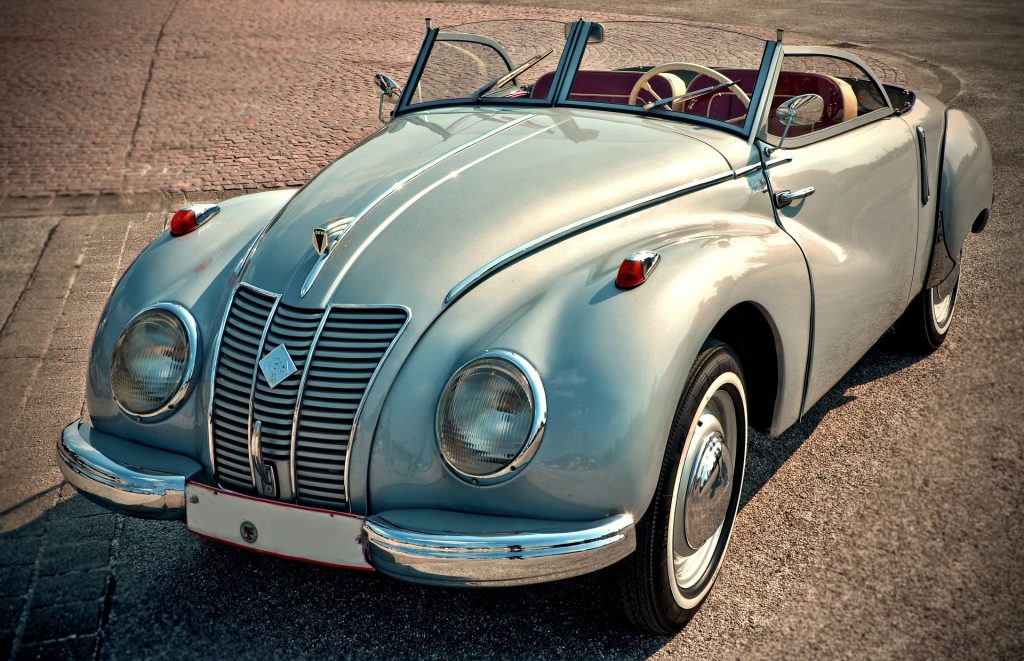
It was 1995 that the current regulation for historical vehicles in Spain came into force. The Spanish authorities now want to update these regulations. The idea is to make them less cumbersome and more affordable. The idea is the new historic vehicle regulations in Spain 2023 receive approval in the summer. The goal is to then implement them in the autumn.
The General Directorate of Traffic (DGT) in agreement with the Ministry of Industry, the Autonomous Communities and the Spanish Federation of Antique Vehicles (FEVA) have prepared new regulations. Historical registration plate Criteria
To request classification of your vehicle as historical the current regulations stipulate it must meet one of several criteria including:
i) be at least 30 years since it was manufactured or first registration and in its original condition
ii) It is also possible to request if the vehicle is listed in the Inventario General de Bienes Muebles de Patrimonio Histórico Español
iii) declared an asset of cultural heritage
i) a vehicle deemed collectible due to its scarcity or uniqueness.
The number of potential new registrations for historical plates is unknown. Some estimates put it at 2 million vehicles, whereas at the moment the number is some 47,000.
The new process will do away with the need to catalogue the vehicle in the Autonomous Communities. This should save over 130 euros. There will also be other savings in both time and cost. In some cases, the costs involved exceed the value of the vehicle. Especially in the case of old motorcycles.
There will be two categories of vehicles under the new regulations.
Group A will consist of vehicles more than thirty years old. These vehicles will already be circulating legally on Spanish roads. Additionally, they must not have had any reforms that will have compromised their originality.
To achieve the classification of ‘historic’, their owners must only present a responsible declaration that they meet the established requirements. On top they must have the ITV and insurance in force.
The anticipation is that the cost of this process is around twenty euros.
Group B consists of vehicles not classified in Group A. For example, imported vehicles or those that are not currently circulating on Spanish roads. Under the new regulations, it is necessary to obtain a report from Servicios Técnicos de Vehículos Históricos to register these vehicles as historic. This report should declare the vehicle fit to circulate on Spanish roads. The report may include restrictions about circulating at night if the vehicle does not have lights or where the vehicle’s maximum speed would make it dangerous to circulate on certain roads.
No Inspections
Using several other European countries regulations as a reference the new procedures will see any vehicle registered before 1950 exempt from the need to undertake a technical inspection. This includes all historical motorbikes and mopeds.
However, the standard also regulates the mechanical and structural modifications allowed to the vehicle, to guarantee its originality. The ITV will admit those reforms that they were common during the vehicle’s production period and in the fifteen years that followed. It also allows car parts that no longer exist or that cannot be bought in the market are replaced by reproductions or similar.
Vehicles newer than 1950 and regardless of their historical status, must have the ITV in force to be able to circulate. Depending on the age of the vehicle, the period between ITV revisions is up to 4 years. Mechanical or security elements that are currently mandatory, for example, the seat belt. will not be required, if they were not equipped with them from the factory. They are exempt from complying with European regulations on polluting emissions.
Low Emission City Centres
The circulation of historic vehicles in urban areas is another of the important issues contemplated by the new regulations, although the final decision remains in the hands of each city council. For this reason, the new standard urges these entities to “establish formulas, through their municipal ordinances, that allow access and circulation” of historic vehicles in the Low Emission Zones (ZBE) of city centres.
Source: DGT.es
